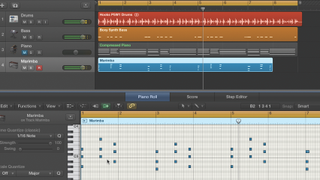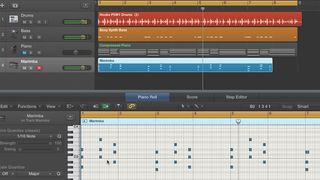When you're trying to craft a catchy tune, one strategy is to combine instruments across a larger melody, creating call-and-answer phrases to play off each other.
In this tutorial, we'll walk you through a three-part melody line and our choices for the different layers.
For more inspiration and techniques for laying down the perfect hook, check out the huge feature in issue 240 of Computer Music magazine.

Step 1: Here’s a chorus section of a track that features just drums, bass and piano, in the key of C minor. We’ll start building our hook by simply replacing the chords that the piano is playing with short, staccato versions of the same chords played by a marimba sample. This marimba part could also be used on its own as the intro to the song, for instance.

Step 2: Next, we program in a single note riff on a different track, also loaded with the same marimba sound - the factory African Marimba preset from Logic Pro X’s EXS24 sampler. To match the rest of the notes in our track, this riff is constructed using notes from the C minor scale.

Step 3: We program a little answering phrase to fill in the gaps between the main hook. We can either use the same marimba sound for this – as it suits the part and could work to make a complex, all-marimba hook – or we could use a different sound for this part, for a kind of ‘duelling hooks’ effect. Something like a mono synth sound, for instance, or even a sung vocal hook.


